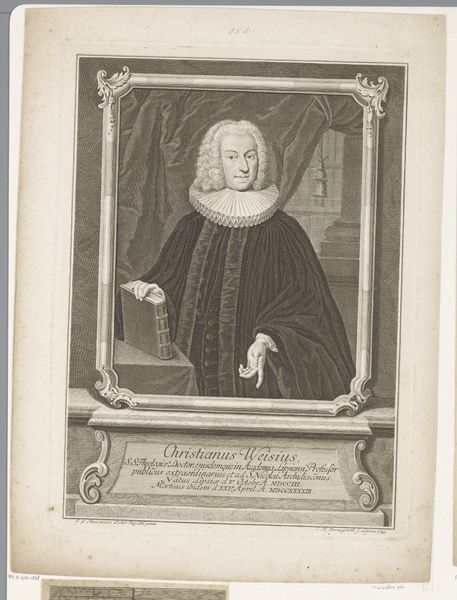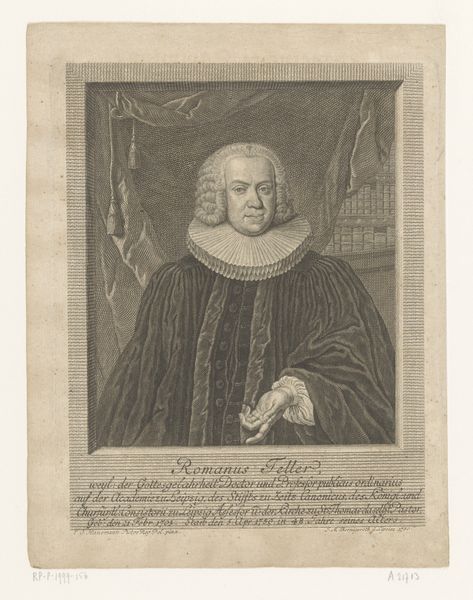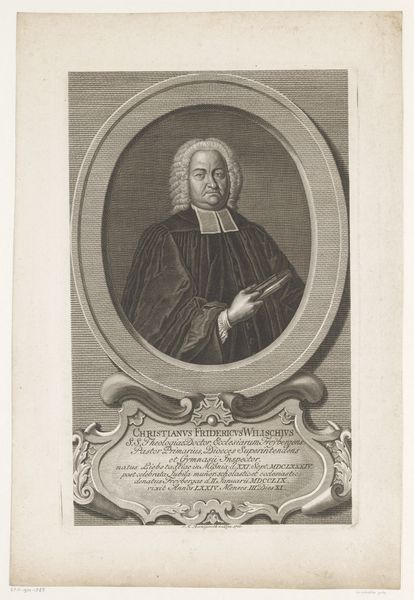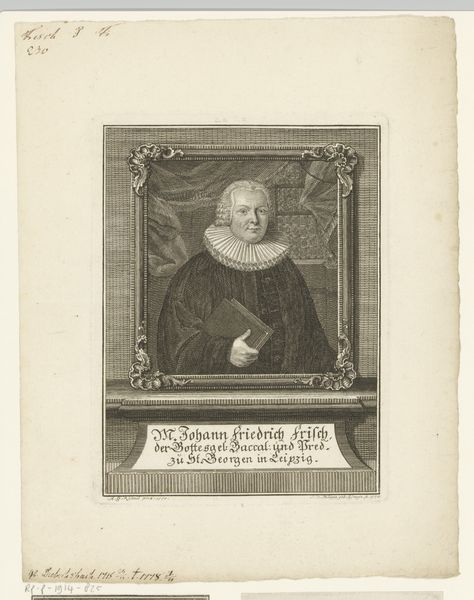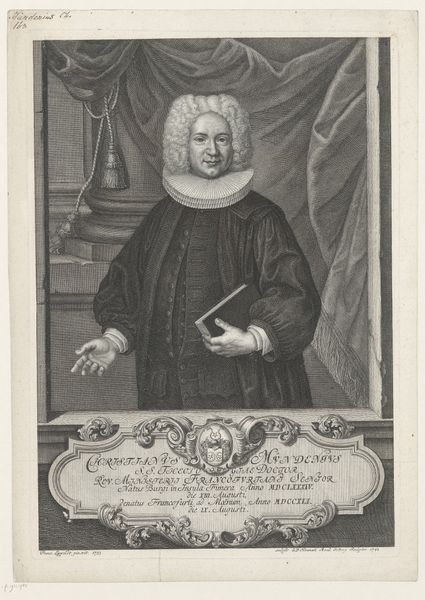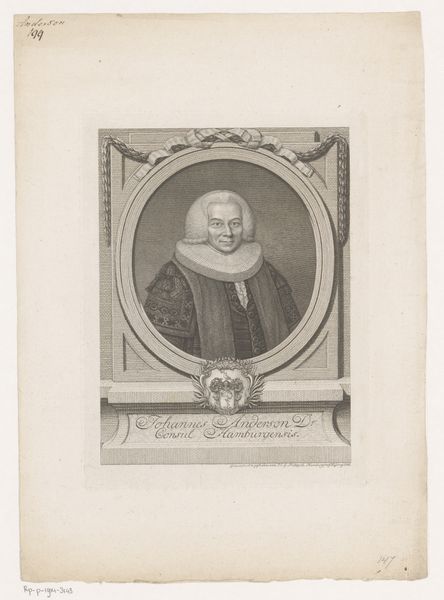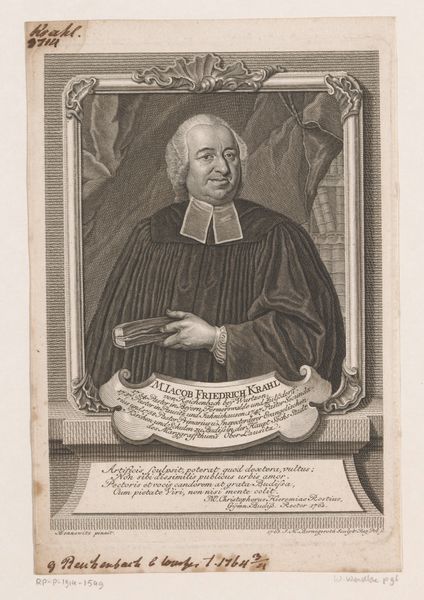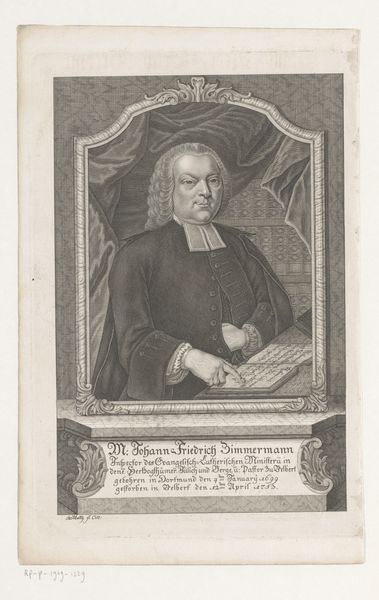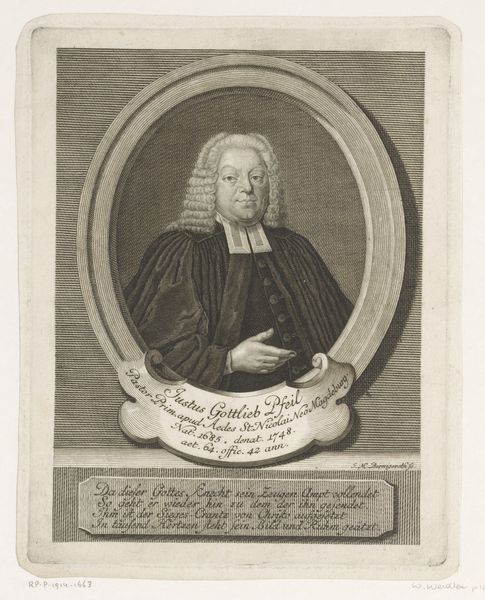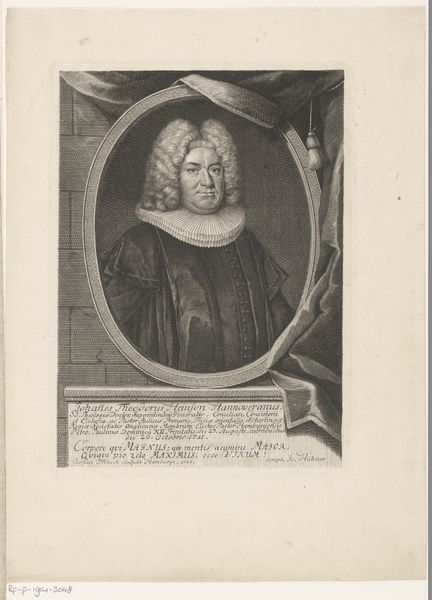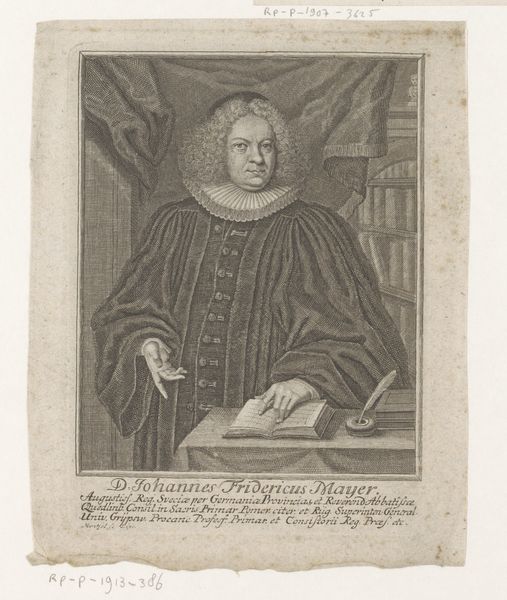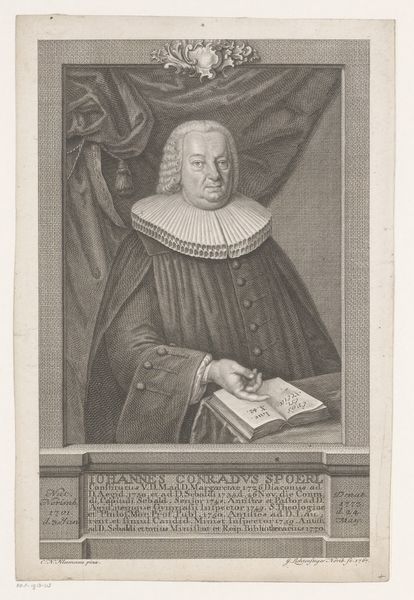
print, engraving
#
portrait
#
baroque
# print
#
old engraving style
#
history-painting
#
engraving
Dimensions: height 206 mm, width 138 mm
Copyright: Rijks Museum: Open Domain
Curator: Let’s turn our attention to this striking portrait of Jacob Brucker, engraved in 1740 by Gustav Andreas Wolfgang. It’s a fascinating example of Baroque portraiture. Editor: It definitely carries the weight of history. The gentleman has a benevolent countenance and the whole scene evokes a feeling of intellectual depth and almost domestic tranquility, like a book nook. Curator: Brucker was, in his time, a rather progressive figure—a theologian and historian deeply engaged with Enlightenment ideas. This print offers insights into the intersection of religion, scholarship, and societal power. His status in society is revealed through symbolism: a book that conveys intellect, the Baroque picture frame suggesting wealth, and finally the religious garment symbolizing faith and spiritual understanding. These features provide historical insight that speaks to today’s contemporary debate over individual liberty, especially academic. Editor: It’s interesting how the composition reinforces this message of status. The framework feels confining—there’s almost no air around his form in a rather small scene, the trappings and ornamentation hinting at restriction rather than liberation. Yet, he calmly gazes into the beyond. The overall feel communicates about cultural memories, doesn’t it? There's something so enduring about this visual language. I sense there’s an interplay of societal role against the essence of a more profound existence. What do you think? Curator: Absolutely, especially considering Brucker's engagement with philosophical challenges to orthodoxy, and one should acknowledge that even images can be tools used by institutions and the church. By presenting himself in this specific visual style, it shows he's presenting himself to others and also speaking directly to history through a specific visual and institutional vernacular that can be examined. Editor: Seeing his collected and almost knowing demeanor, against the symbolic richness in the print itself has granted me an increased understanding of the image's purpose as a symbol of human memory as a means to transcend limitations and restrictions. Curator: Considering the print's function, in its era, adds much depth to understanding it and seeing that art and symbols play significant roles within social movements that reach across time.
Comments
No comments
Be the first to comment and join the conversation on the ultimate creative platform.
